|
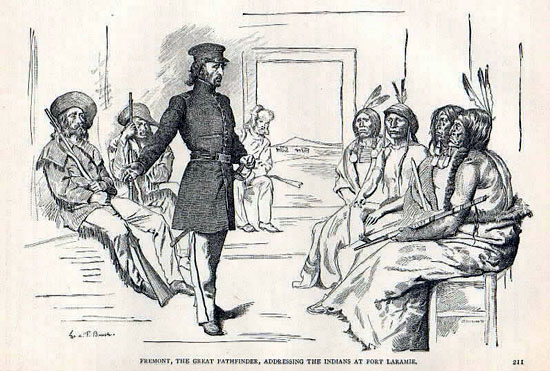
Fremont addressing the Indians at Fort Laramie.
John C. Fremont's first two expeditions passed through the Lander area. The first
expedition of 1842 made it as far as the Wind River Mountains and South Pass.
The second in 1843 demonstrated that South Pass was the best route through the
Rockies. Fremont on his various expeditions relied primarily on French trappers, including
Basil Cimineau LaJeunesse from Louisiana, as guides. The Seminoe Mountains and cutoff, as discussed with regard
to Ghost Towns, are named after LaJeunesse.
Others on the Fremont Expeditions included
Kit Carson, Lucien Bonaparte Maxwell, Fremont's chief hunter, and Fremont's mapper, a German named Charles Pruess.
Maxwell
later went on to own approximately 2,000,000 acres in northern New Mexico. Billy the Kid
died in a house that had formerly belonged to Maxwell.
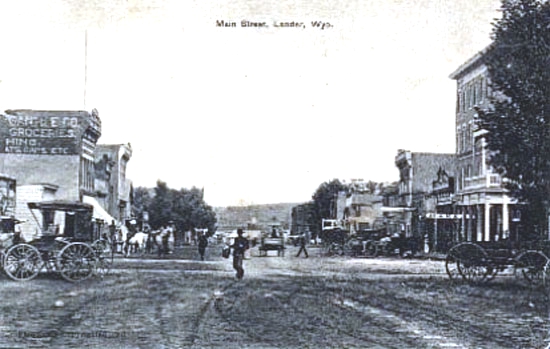
Lander, Wyoming, 1907, Freemont Hotel at right in photo.
Fremont forebade the keeping of any journal other than that kept by Fremont himself. Insofar as
most of the men were concerned, this was a needless order since most, such as Carson, were
illiterate. Apparently unknownst to Fremont, Pruess secretly kept a diary in German which
has only come to light in the early 1970's. The journal, although showing that
Pruess regarded Fremont as a friend, also at times questioned his intelligence.
Pruess was also persnickety and insisted, unlike other members of the company, on
wearing clean clothes. As discussed with regard to mountain men, this was
something highly unusual.
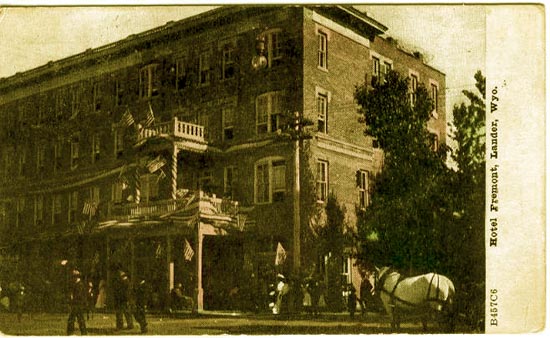
Lander, Freemont Hotel, 1909.
Pruess was not the only one to question Fremont's leadership. Joseph Reddeford Walker,
picture on previous page, called Fremont "the greatest moral and physical coward I ever met."
Walker continued: "I would call him a woman, if it weren't a slur to the sex."
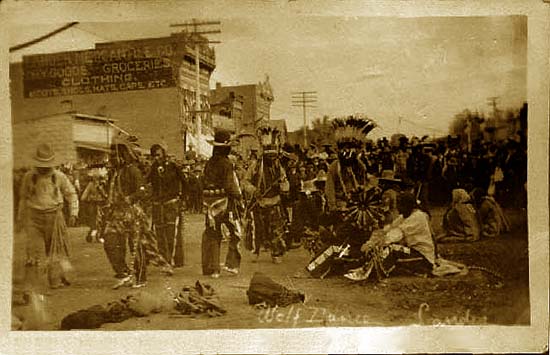
Lander, wolf Dance, 1907.
The Wolf Dance, or tdsayuge, celebrated the return of a war party.
It is related to the the Grass Dance still performed by Plains and Eastern Native Americans.
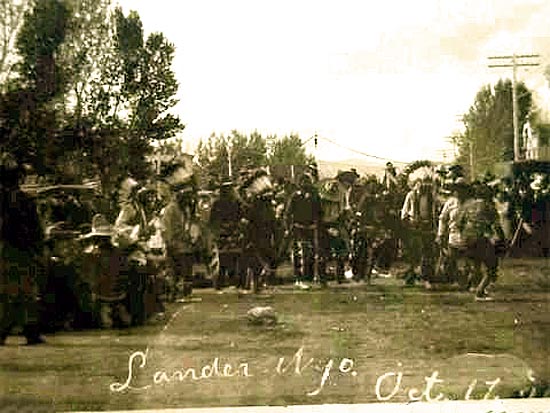
Indians at Lander, 1907.
In 1870, Camp Auger's name was changed to Camp Brown. The following year, the Military moved
to Fort Washakie about 16 miles to the north. The town, however, remained, but was called
"Push Root." Allegedly, the name was derived as a result of warming chinook winds causing crops to
germinate early. Another explanation has been given that the name was a term of derision given by a
nearby competing town of North Fork (also known as Milford) about five miles to the north.
Residents of Lander were known as "Pushrooters." At the time, North Fork was enjoying an
economic boom as a result of its saloons and other places of resort for soldiers at Fort Washakie.
But he who laughs least, laughs last. In 1884, upon the formation of Fremont County, the pushrooters
won the election to become the county seat. North Fork is now regarded as a ghost town. When it
came time for Push Root to get a post officer, however, the
post office department rejected the name and, thus, the town was named at the suggestion of
Benjamin Franklin Lowe after F. W. Lander.
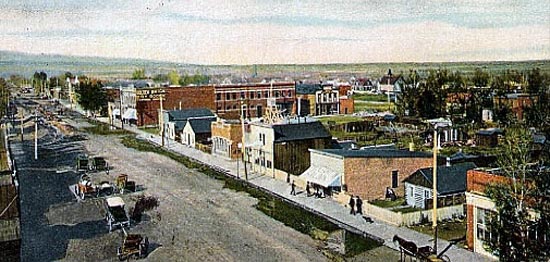
Lander, Main Street looking West, 1907.
The town was constructed on lands owned by Lowe. In exchange
for assistance in developing the the town, Lowe gave a portion of the land to Eugene Amoretti, a
successful entrepreneur. Amoretti had engaged in the mining and mercantile business in South Pass City.
Among the mines in owned were the Eldorado, Washington, Tollgate, Hunkadori, and the
Caribou. He owned mercantile establishments in South Pass, Atlantic City, Miners Delight and
North Fork. In lander he founded another mercantile establishment, the First National Bank of Lander, the feed mill, and was one of the
investors in the electric plant. When the town was incorporated, Amoretti became the first mayor.
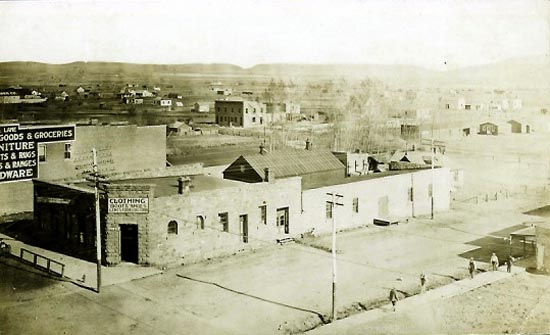
Lander, 1908.
Amoretti apparently had no need to fear bank robbers. According to Richard Patterson, Butch Cassidy, A Biography,
University of Nebraska Press, 1998, Amoretti was a personal friend of Butch Cassidy with Cassidy even depositing
some of his ill-gotten gains in Amoretti's Bank and during hard times receiving loans from the bank.
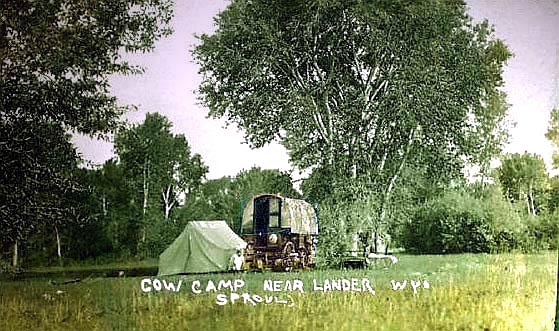
Cowcamp near Lander, undated.
Amoretti was not the only successful businessman in Lander to arise out of the South Pass Mining District.
Worden P. Noble (1847-1914) started as a teamster in Atlantic City. As a stockman, he was the first to
take cattle into Ten Sleep. The herd he built up was ultimately sold to Sir Horace Plunkett. Noble then
went into the mercantile business at Fort Washakie and in Lander. In Lander he was also in the banking
business.


|